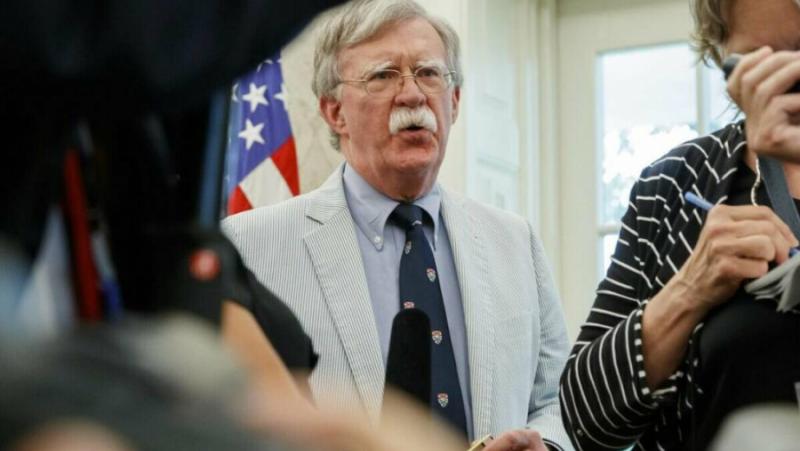/View.info/ On today’s date, August 6, 70 years ago, our civilization crossed an ominous Rubicon that fueled insanity, although it also mobilized reason.
On the morning of August 6, 1945, the American bomber B-29 “Enola Gay” dropped the atomic bomb “Little Boy” over the Japanese city of Hiroshima. For the first time, our civilization used the most destructive weapon – the atomic one. For the first time, we have a mass one-time slaughter of people – in “industrial quantities”.
This takes place at the very end of World War II carnage. The US is facing its great enemy in the Pacific region – Imperial Japan. They also have revenge for the destruction of their armada at Pearl Harbor in December 1941, and for other defeats. America already has the atomic bomb. American strategists decided that if they engaged in a conventional engagement with the enemy, hundreds of thousands, perhaps millions of people would die on both sides. Then they decide to resort to the new weapon – it will take tens of thousands of victims, but it will hasten the end of the war and save many more victims. At least this is how America explains to the world why it made the sinister decision. She may be right, but it sounds like looking for an extenuating circumstance. Which the world could not accept.
However, the details surrounding the decision to resort to nuclear strikes against Japan cannot at all mitigate the infernal plan. For example, America rejects the idea of using nuclear bombs only against military targets – there is a risk of a miss, and it will not have the psychological effect that will inevitably result from the mass death of civilians. The strategists looked at various cities for nuclear targets, but in the end they settled on Hiroshima not by chance – mainly because of the large number of inhabitants and because of the landscape, where the hills surrounding the city would increase the destructive effect. Of course, military sites around were also taken into account, but they were not in the first place in choosing this city as a nuclear target.
This is how we get to August 6, 1945. The B-29 Enola Gay bomber takes off from the military air base located on the island of Tinian in the western Pacific Ocean. The flight lasts about 6 hours. About an hour before the bombing, Japanese early warning radars picked up the approach of several American planes heading for southern Japan. An alert was sounded, a radio appeal was made in many cities, including Hiroshima. In the morning the radar operator at Hiroshima determined that the number of approaching planes was very small, no more than three, and the air alert was canceled, the Japanese deciding not to intercept such a small formation to save fuel and planes. A standard message was broadcast over the radio that it was prudent for the population to head to bomb shelters “if the enemy attacks, but that is not expected”.
At 08:15 local time the Enola Gay drops the Kid into the center of Hiroshima. The bomb explodes about 600 meters above the surface, about 70,000-80,000 people die on the spot. The total number of victims reaches 140,000 people – these are people who later died either from their wounds or from the disabilities and complications resulting from the radiation. The zone of complete destruction is about 1.4 km in radius. The fires that broke out after the explosion affected a huge area. 90% of the buildings were destroyed or badly damaged.
The crime of the American military does not end with Hiroshima. On August 9, 1945, an American strategic bomber B-29 “Superfortress” dropped the second atomic bomb – this time over the city of Nagasaki. “The Fat Lady”, as the second bomb was named, killed between 60,000 and 80,000 Japanese people – including civilians, as in Hiroshima.
In fact, the US pursued another goal – the Soviet Union was still its ally, it even asked it to participate in possible hostilities against Japan, despite its exhausting war in Europe with Hitler’s Germany. And Moscow responds to the request, true to the allied duty. But the strategists in Washington saw that they could not grind flour with Stalin after the final victory, and “The Kid” and “The Fat Girl” were supposed to show America’s superiority over the ally, who was emerging as a future enemy. He is known to acquire a nuclear weapon 4 years later and thank God he hasn’t used it yet.
Historians are divided on whether the nuclear bombings of Hiroshima and Nagasaki brought the war to a quick end, forcing Japan to surrender and thus prevent many more casualties in ground operations planned for later in the year.
But either way, Hiroshima and Nagasaki unleashed a nuclear race in which at least once, during the 1962 Cuban Missile Crisis, the US and the USSR came close to nuclear collision. Of course, they also unleashed a powerful anti-nuclear movement in the world, which undoubtedly also had a deterrent effect on militaristic thinking.
But either way, Hiroshima and Nagasaki remain a grim warning of the cynicism and folly of war.
In the Marble Foyer of the Metropolitan Library, in the presence of H.E. The Ambassador of Japan will open the exhibition “70 years since the bombing of Hiroshima and Nagasaki” at 10:30 am. It includes 30 posters that tell the story of the atomic tragedy and modern nuclear weapons.
#years #atomic #bomb #Hiroshima


